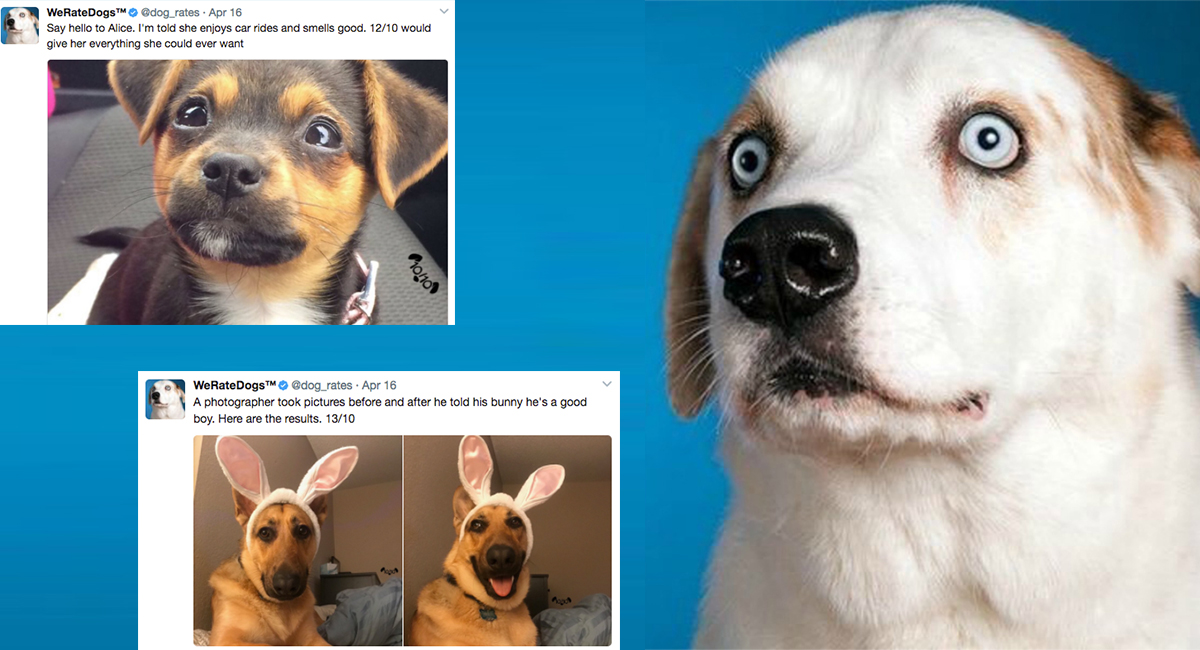Real-world data rarely come clean. Using Python and its libraries, I have gathered data from a variety of sources and in a variety of formats, assessed its quality and tidiness, then cleaned it.
The dataset on which I have done wrangling (and analyzing and visualizing) is the tweet archive of Twitter users @dog_rates, also known as WeRateDogs.
WeRateDogs is a Twitter account that rates people's dogs with a humorous comment about the dog. These ratings almost always have a denominator of 10. The numerators, however Almost always higher than 10. 11/10, 12/10, 13/10, etc. Why? Because "they're good dogs.". Also, WeRateDogs has over 4 million followers and has received international media coverage.
-
Data wrangling, which consists of:
- Gathering data
- Assessing data
- Cleaning data
-
Storing, analyzing, and visualizing your wrangled data
-
Reporting on 1) Data wrangling efforts and 2) Data analyses and visualizations
Here, I have Gather each of the three pieces of data as described below in a Jupyter Notebook titled wrangle_act.ipynb:
-
The WeRateDogs Twitter archive
twitter_archive_enhanced.csv. This file was downloaded manually from an URL provided by Udacity. -
The tweet image predictions, i.e., what breed of dog (or another object, animal, etc.) is present in each tweet according to a neural network. This file (
image_predictions.tsv) was hosted on Udacity's servers and I've downloaded it using the Requests library from the following URL: https://d17h27t6h515a5.cloudfront.net/topher/2017/August/599fd2ad_image-predictions/image-predictions.tsv -
Each tweet's retweet count and favorite. Using the tweet IDs in the WeRateDogs Twitter archive, I've queried the Twitter API for each tweet's JSON data using Python's Tweepy library and stored each tweet's entire set of JSON data in a file called
tweet_json.txtfile. Each tweet's JSON data should be written to its line. Then read this .txt file line by line into a pandas DataFrame with (at minimum) tweet ID, retweet count, and favorite count.
After gathering each of the above pieces of data, assessed them visually and programmatically for quality and tidiness issues. I've detected and documented quality issues and tidiness issues in the wrangle_act.ipynb Jupyter Notebook.
- We only want original ratings (no retweets) that have images. Though there are 5000+ tweets in the dataset, not all are dog ratings, here some are retweets.
- Cleaning includes merging individual pieces of data according to the rules of tidy data.
- The fact that the rating numerators are higher than the denominators does not need to be cleaned. This unique rating system is a big part of the popularity of WeRateDogs.
I cleaned each of the issues and documented them while assessing. Perform this cleaning in wrangle_act.ipynb as well and got the result of high quality and tidy master pandas DataFrame
Finally, I Stored the clean master DataFrame in a CSV file with the main one named master_archive.csv.
